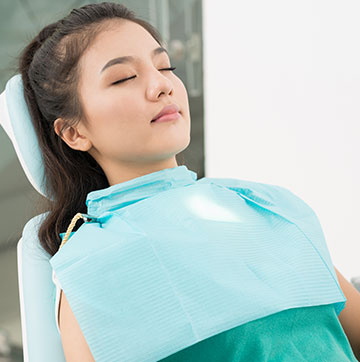Sleep Dentistry For Beecroft Patients – What Is It?
For decades, dentists have used sedation to help patients relax during dental treatments or cosmetic dentistry procedures. Nowadays, it’s referred to as ‘sleep dentistry’ although Beecroft patients should be aware that this isn’t entirely accurate. Modern techniques allow patients to remain awake with the exception of those who are under a general anaesthetic.
Levels of Sleep Dentistry
There are in fact various levels of sedation or ‘sleep dentistry’ that allow patients to undergo preventative, restorative, and cosmetic dentistry treatments in relative comfort. They include:
- Minimal sedation – Typically reserved for anxious patients seeking out minimal treatments. Patients remain fully awake but relaxed.
- Moderate sedation – Sometimes known as conscious sedation, patients remain awake but tend not to remember much about the treatment
- Deep sedation – Reserved for the most invasive of restorative and cosmetic dentistry treatments where patients are sufficiently awake to be able to respond to the dentist where needed but remain on the edge of consciousness
- General anaesthesia – This is the only true form of sleep dentistry where the patient remains unconscious throughout the treatment although this form of anaesthetic is typically reserved for a hospital setting rather than chair-side cosmetic dentistry treatments.
There are several ways to administer conscious sedation depending upon your dentist. These include:
- IV (intravenous) sedation – As the name suggests a light or moderate sedative is delivered intravenously via a small catheter located in the back of the hand or arm.
- Nitrous oxide sedation – Often known as ‘laughing gas’ or ‘happy gas’, this form of sedation dentistry is commonly used because it doesn’t cause grogginess or sickness. Sedation is administered using inhalation via a small nosepiece making the patient feel calm, relaxed and even euphoric.
- Oral sedation – Some cosmetic dentistry patients who prefer non-invasive delivery methods may choose oral sedation. This is issued by means of a pill – typically Halcion which is designed to induce drowsiness.
Sleep Dentistry in Beecroft – Who Is It For?
Anyone who suffers from dental fear or anxiety can benefit greatly from sleep dentistry. It’s also good for patients who have low comfort thresholds, bad gag reflexes or need to undergo complex cosmetic dentistry or restorative procedures

